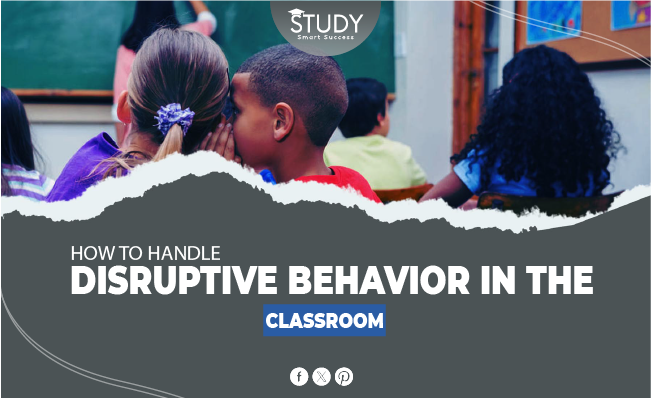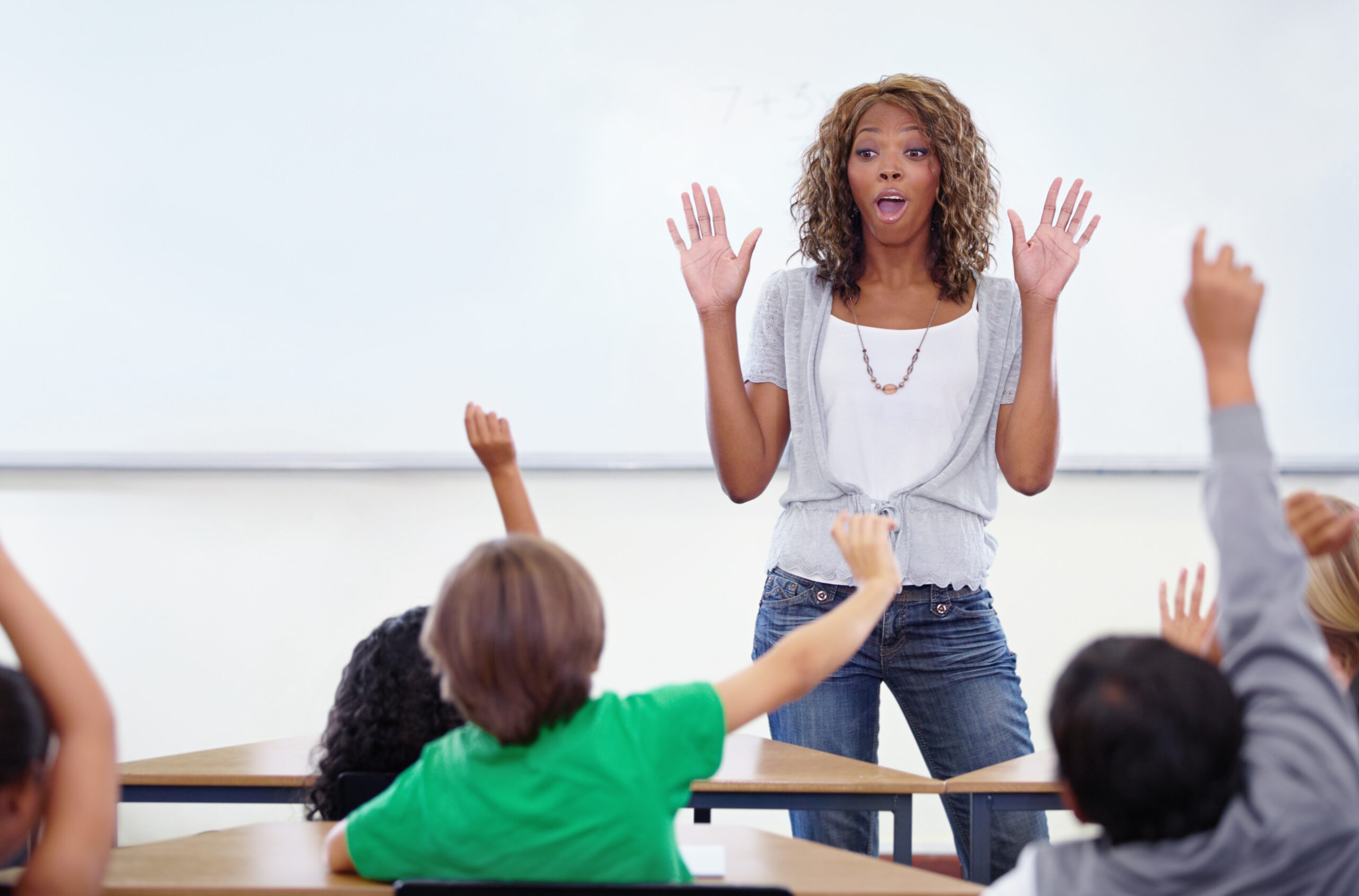An important part of being a teacher is handling disruptive behavior in the classroom. It’s not just a problem for teachers; it’s a big problem that affects many kids’ learning. It’s not about eliminating individuality or fun when dealing with disruptive behavior; it’s about ensuring kids can learn behavior. This comprehensive guide will examine how to handle disruptive behavior in the classroom.
Read more about Challenging Behaviors in the Classroom.
Understanding the Roots of Disruption
The first thing that must be done to stop disruptive behavior is to determine where it comes from. Mental health issues, societal issues, and educational structure may create disruption. It’s very important to figure out why someone is acting in a certain way. Is it because they don’t understand the material? Do the kids not feel pushed or heard? Or is there a personal problem that makes it hard for them to participate?
Looking for Red Flags
It is very important to understand the range of disruptive actions. Disruptions that don’t seem important can sometimes be signs of bigger problems. For instance, a student who refuses to participate might not be deliberately rebellious or have trouble understanding. If you notice these warning signs early on, the behavior may not worsen.
Establishing Supportive BehaviorA classroom where kids feel secure discussing their emotions and views is less likely to have issues. Setting up regular check-ins or making time for peer teamwork can help create this kind of atmosphere.
Establishing Clear Expectations and Consequences
Starting with clear classroom conduct guidelines is one of the greatest methods to prevent disruptions. Along with these goals, it is important to spell out what will happen if these standards aren’t met.
These rules should be explained and repeated at the start of the school year to ensure students remember them. Enforcing these rules consistently is important for keeping things in order and showing students that their actions have real effects.
Engaging Students with Interactive Learning
Engaging people is the opposite of upsetting them. Technology, collaborative projects, and hands-on experiments may help teachers engage pupils and improve learning. These strategies limit student distractions by making learning more engaging and relevant.
In addition, collaborative learning lets students be involved in their education, which builds a sense of duty and a natural drive to behave positively in the classroom.
Proactive Classroom Management
A proactive method of managing behavior can reduce disruptions caused by large behavior. Getting clear standards, routines, and penalties from the start gives students power and creates a good learning atmosphere.
Setting Clear Expectations
Students are more likely to do what is asked of them when they know what that is. It is important to ensure that everyone in the school knows the rules and why they are in place. This will help create a safe and respectful environment.
Consistency Is Key
Rules and penalties must always be followed the same way. The consequences for breaking the rules should be very clear to the students. In addition, they should know why following the rules is important.
Flexibility in Approach
Even though you need to be consistent, you should use different methods with each kid because they are unique. Some people may react well to minor cues, while others may need to be told directly what to do. The most important thing is to stay open and ready to change how you do things as needed.
Building Relationships with Students
One important thing for a good learning setting is for teachers and students to accept and understand each other. You show that you care about your kids as people, not just as students, when you take the time to get to know them. Making students feel linked to teachers can greatly reduce disruptive behavior because students are more likely to respect teachers.
Talking about things other than schoolwork shows students that you care about their thoughts, feelings, and well-being. Also, knowing about students’ backgrounds and hobbies can help teachers ensure that their lessons keep their attention, making it less likely that they will cause problems.
Utilizing Positive Reinforcement
Positive feedback is a strong way to change how people act. Not only does recognizing good behavior motivate the student involved, but it also sets a good example for the rest of the class.
This could be as easy as giving praise verbally, using rewards, or giving extra rights to kids who always behave well. These rewards help create a good atmosphere in the classroom by encouraging students to behave in a good way.
Encouraging Student Ownership of the Learning Process
Giving kids the power to control their learning builds a sense of duty and responsibility. When students help set goals and decide how they will learn, they are more interested and less likely to cause problems. Discussions led by students, group teaching, and choice boards are all methods that can help students care more about their education.
Implementing Conflict Resolution Techniques
Conflict resolution skills help students deal with differences healthily, lowering the chance that they will cause problems. Students can learn to handle real-life conflicts coolly and politely by acting out events and discussing academic conflicts. These kinds of skills are useful not only in school but also in the student’s personal lives. They also make the classroom a better learning place where people can get along and work together.
Addressing Disruptive Behavior Effectively
You can’t stop disruptive behavior, but how you deal with it can make a huge behavior. Strategies that work can help change bad behavior, reward good behavior, and make them safe again, both behavioral and private. Response
The best way to act quickly and privately to deal with disruptive behavior is to help the student get the help and care they need while having the least effect on the other students in the class. A simple nonverbal cue or closeness control can often be enough to get a student to pay attention again.
Providing Incentives for Positivity
Setting up a system of rewards for good behavior can be a great way to get kids to work on their behavior. Praise and rewards for good behavior help kids remember to follow the behavior and make the school a better place.
The Power of Restorative Justice
By using restorative justice, teachers can make their classes places where kids are responsible for their actions and have the chance to learn from their mistakes and grow. This method focuses on understanding, taking responsibility, and fixing the damage that disruptive behavior causes.
Incorporating Technology in Classbehaviorgement
Technology can help keep students in line and get them more involved in the class. Teachers can use educational apps and tools to keep track of their student’s progress, set up engaging tasks, and ensure that each student has a unique learning experience.
Digital tools, such as classroom management software, help plan daily activities and can also be used to set up award systems that encourage good behavior. Additionally, online conversation behaviors promote polite and helpful dialogue outside formal classroom settings, enabling students to work together and assist each other’s learning.
Continuous Professional Development
Continuous professional development is vital for teachers to keep up with the changing difficulties of running a school. Teachers can get new ideas and tools by attending classes, seminars, and training events on the newest ways to teach and deal with behavior problems. Since teachers continually learn, they may employ new strategies to succeed and satisfy student needs.
These classroom management strategies may help teachers make the classroom entertaining and engaging and drive students to succeed.
Involving Stakeholders
Stopping disruptive behavior is not something that one person can do. Including all the important people in the school, like parents, officials, and even the kids themselves, can help find better answers and build community within the school.
Open Communication Channels
It is very important to keep contact with partners open and honest. Getting regular information on a student’s behavior can help keep problems from worsening behavior and develop better ways to help them.
Collaborating for Success
Setting up a joint way to deal with disruptive behavior can work well. Putting together a team to help students who are having trouble can give them all the help they need and also spread the responsibility of dealing with bad behavior.
Advanced Techniques for Persistent Issubehaviorudents whose disruptive behavior lasts for a long time or is very bad, teachers may need to use more advanced methods and materials to help them and keep the learning environment safe.
Behavior Contracts and Support Plans
When more official help is needed, behavior contracts and support plans can give students and their support network structure and a clear way to move forward. It is agreed upon what these tools will show the student, what will happen if they don’t follow through, and what support systems are in place to help them reach their goals.
Professional Development and Support
Disruptive behavior can sometimes be a sign of a bigger issue with the help of a professional. School counselors and teachers who continue to learn can help find and deal with the reasons for persistently disruptive behavior.
Engaging Families in the Educational Process
Getting to know the families of your kids well can be very helpful in controlling their behavior in the classroom. Families can be involved by encouraging them to join in on events in the classroom, meetings, and other parts of the learning process.
Involved families may better grasp school expectations and support excellent conduct at home. Teachers may provide kids with a strong home-school connection that supports their development and conduct by working with behavior families.
Reflecting and Adjusting
When it comes to behavior, school problems are always changing, too. A good teacher constantly thinks about how well their classroom management methods work and is open to making changes and developing new ideas.
The Power of Self-Reflection
Thinking about how you handle behavior and how you can improve can be a very helpful way to grow. Think about what worked and what didn’t, and be willing to keep looking for ways to make your teaching methods better.
Seeking Feedback from Others
Along with self-reflection, getting feedback from coworkers, teachers, and even students can help determine how well your classroom management tactics work. When teachers talk openly with each other, they can share what works and come up with creative answers to problems they all face.
It may be necessary to be flexible and open to student feedback, but it can give you a unique view of what is and isn’t working regarding classroom behavior and punishment. It is significant for behavior or growth and for creating a good, practical learning setting to get and use feedback.
Staying Abreast of Current Research and Best Practices
You can find new ideas and methods in your classroom by keeping up with the latest studies and best practices in behavior control. You can learn a lot by attending behavior, reading books about education, and even connecting with other teachers.
Lastly, dealing with disruptive behavior in the classroom requires hard work, understanding, and the ability to change. Understanding disruptions, proactively managing and properly regulating behavior, integrating stakeholders, using advanced behaviors when appropriate, and encouraging contemplation and creativity may help youngsters learn, grow, and thrive.
Teachers run, not sprint, and every day is a fresh opportunity to change kids’ lives.



